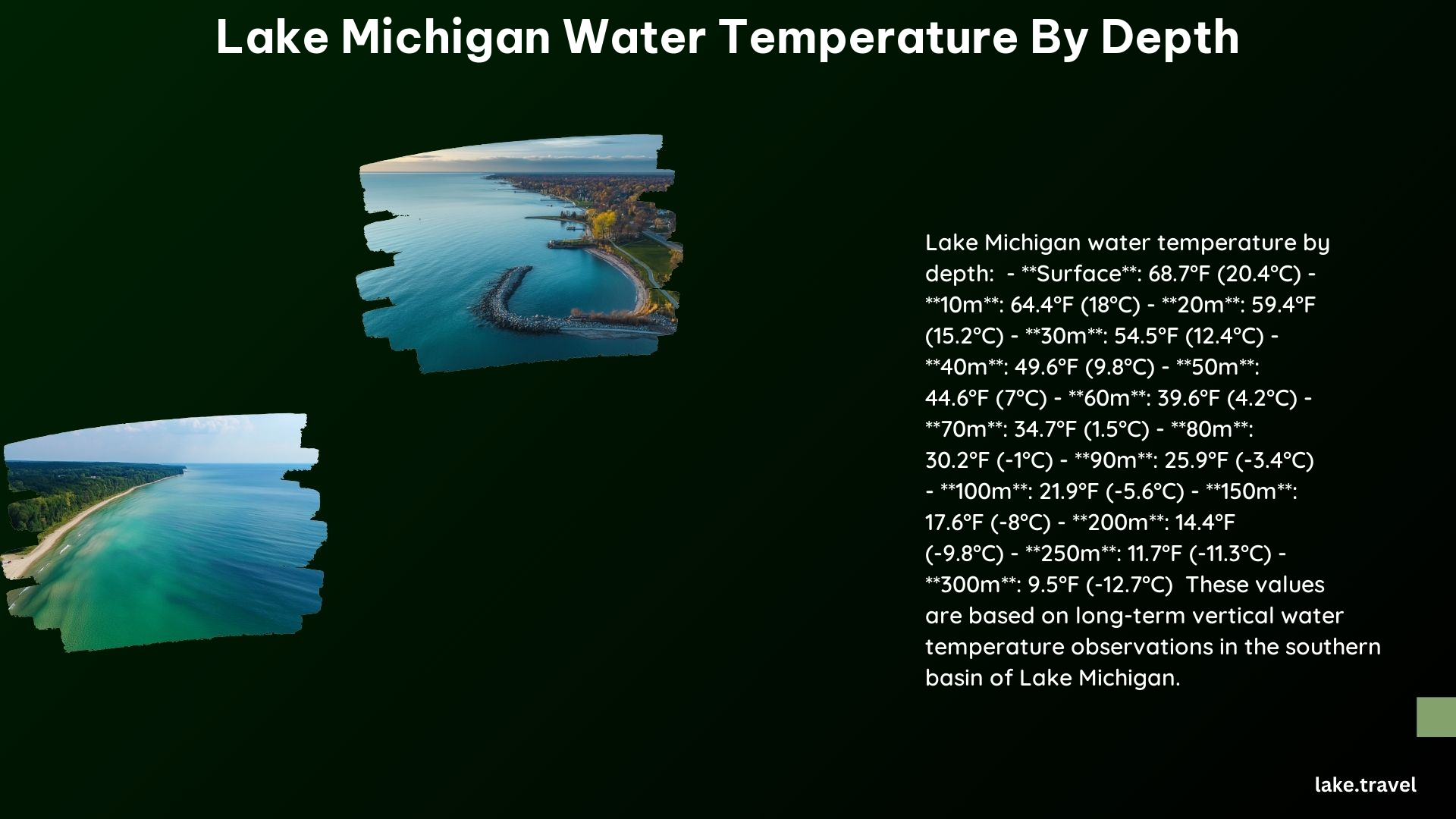Lake Michigan, the second-largest Great Lake by volume, exhibits a significant variation in water temperature by depth. The temperature profile is influenced by seasonal changes and stratification, which affects the water’s thermal structure.
Temperature Profile by Depth

Surface Temperature
The surface water temperature in Lake Michigan varies seasonally, with the warmest temperatures in August (average around 70.5°F / 21.4°C) and the coldest in February (average around 36.9°F / 2.7°C). The current surface water temperature is 70°F (21.1°C).
Deep Water Temperature
At the deepest part of Lake Michigan, the temperature remains relatively constant, ranging from around 39°F (3.9°C) to 45°F (7.2°C) throughout the year. The deepest part of Lake Michigan is approximately 925 feet (282 meters) deep.
Temperature at Specific Depths
- 120 feet (36.5 meters): The average water temperature at a depth of 120 feet in Lake Michigan is around 45°F (7.2°C) to 50°F (10°C).
- 80 feet (24.4 meters): In the summer months, the typical water temperature range at a depth of 80 feet is around 55°F (12.8°C) to 60°F (15.6°C).
Factors Influencing Temperature

Seasonal Stratification
During the summer, the lake stratifies into warmer surface water and colder deeper water. This stratification is reversed in the fall when the surface water cools and mixes with the deeper water.
Wind and Mixing
Wind plays a significant role in mixing the water, particularly during the fall turnover, which helps to distribute heat and nutrients throughout the lake.
Importance of Temperature Profile
Understanding the temperature profile by depth in Lake Michigan is crucial for various activities such as:
Recreational Activities
Knowing the water temperature helps in planning swimming, diving, and fishing trips, ensuring safety and comfort.
Ecosystem Management
Temperature affects the distribution and behavior of aquatic life, making it essential for managing fisheries and preserving the ecosystem.
Climate Research
Long-term temperature records help scientists study climate change and its impact on the Great Lakes.
By understanding the Lake Michigan water temperature by depth, you can better plan your activities, manage the ecosystem, and contribute to climate research. Whether you’re a lakes touring enthusiast, a fisherman, or a scientist, this information can be invaluable.
References:
– SeaTemperature.info – Lake Michigan Water Temperature
– SeaTemperature.org – Lake Michigan Water Temperature (MI)
– LakeMonster.com – Lake Michigan Water Temperature
– GLERL.noaa.gov – Vertical Water Temperature in Southern Lake Michigan
– NODC.noaa.gov – Long-term vertical water temperature observations in the deepest part of Lake Michigan.
